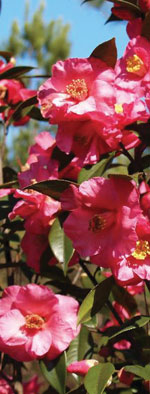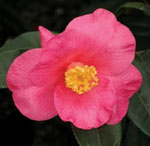Camellias for December Color
go.ncsu.edu/readext?232315
en Español / em Português
El inglés es el idioma de control de esta página. En la medida en que haya algún conflicto entre la traducción al inglés y la traducción, el inglés prevalece.
Al hacer clic en el enlace de traducción se activa un servicio de traducción gratuito para convertir la página al español. Al igual que con cualquier traducción por Internet, la conversión no es sensible al contexto y puede que no traduzca el texto en su significado original. NC State Extension no garantiza la exactitud del texto traducido. Por favor, tenga en cuenta que algunas aplicaciones y/o servicios pueden no funcionar como se espera cuando se traducen.
Português
Inglês é o idioma de controle desta página. Na medida que haja algum conflito entre o texto original em Inglês e a tradução, o Inglês prevalece.
Ao clicar no link de tradução, um serviço gratuito de tradução será ativado para converter a página para o Português. Como em qualquer tradução pela internet, a conversão não é sensivel ao contexto e pode não ocorrer a tradução para o significado orginal. O serviço de Extensão da Carolina do Norte (NC State Extension) não garante a exatidão do texto traduzido. Por favor, observe que algumas funções ou serviços podem não funcionar como esperado após a tradução.
English
English is the controlling language of this page. To the extent there is any conflict between the English text and the translation, English controls.
Clicking on the translation link activates a free translation service to convert the page to Spanish. As with any Internet translation, the conversion is not context-sensitive and may not translate the text to its original meaning. NC State Extension does not guarantee the accuracy of the translated text. Please note that some applications and/or services may not function as expected when translated.
Collapse ▲
x Camillia ‘Crimson Candles’
Camellia Web©
As glorious as Camellia japonica is in the spring, it is just one of many spring-flowering trees and shrubs. The true camellia stars are those that flower during the winter when gardeners are starved for bright colors in the landscape. One of the brightest of those stars is Camellia sasanqua ‘Yuletide.’ This December-flowering camellia features large bright-red single blooms with contrasting yellow stamens that give an eye-catching focus to the winter landscape. Its glossy green foliage offers the perfect backdrop for its spectacular display. ‘Yuletide’ has an erect, compact growth habit with dense foliage that lends itself well for use as a loose hedge plant or as a focal shrub.
As with other sasanquas, ‘Yuletide’ tolerates drought after it becomes established. Consider its ultimate height of 10 feet and slow growth rate before deciding on an appropriate planting location. It prefers well-drained soil with a pH of 6.0 to 6.5 for best growth. It can withstand the sun but does need protection from drying winter winds. One of the most popular winter flowering shrubs, ‘Yuletide’ makes a great addition to any southern garden.

x Camillia ‘Crimson Candles’
GossettsNursery©
Another good choice for winter color is Camellia x ‘Crimson Candles.’ This rapidly-growing hybrid stands out with numerous small rose-red single flowers in February and March. The new foliage is bronze-red, and the plant is vigorous and disease resistant. One of its best features is its sepals, which are red throughout the winter while the buds are maturing. This gives the bud the look of a red candle long before the flowers open, hence the name, ‘Crimson Candles.’ Suited for hedges, espalier, topiary or bonsai, this cultivar can also withstand night temperatures in the 20s and is hardy in USDA zones 7 through 9.
These plants can be seen at the JC Raulston Arboretum along with many other camellias suitable for N.C. landscapes.


